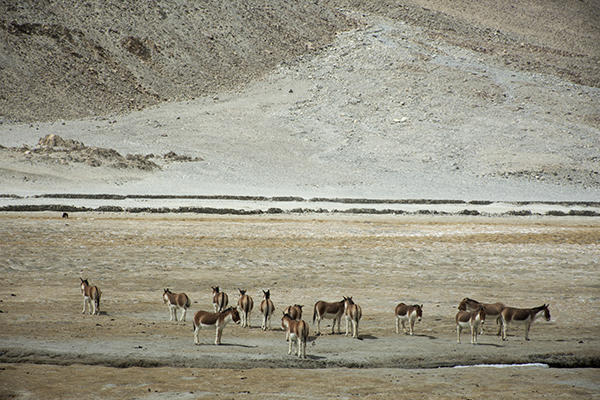New microbes discovered in a partridge pea, an ice core and cow's milk
Posted on December 10, 2019 by Matt Bassett
Each month, the Microbiology Society publishes the International Journal of Systematic and Evolutionary Microbiology (IJSEM), which details newly discovered species of bacteria, fungi and protists. Here are some of the new species that have been discovered and the places they’ve been found.
As it’s December we tried to find Christmassy microbes, and while it’s not quite a partridge in a pear tree, researchers found a new species of bacteria (Bradyrhizobium niftali) in a partridge pea (Chamaecrista fasciculata). The new species is described as an effective nitrogen fixing symbiont of the pea. Nitrogen fixation is vital for life on earth and often occurs within a symbiotic relationship between a group of soil bacteria collectively known as ‘rhizobia’ and a plant. The plant gains nitrogen from the rhizobia, and the rhizobia gains products from photosynthesis from the plant.

It may not be a white Christmas this year, but researchers have found plenty of microbes associated with ice and snow. Haloactinobacterium glacieicola was isolated from an ice core drilled from the Hariqin Glacier on the Tibetan Plateau, the largest area of glacial ice outside the polar regions. Two new species were given the species name arcticus this month; Deinococcus arcticus was discovered in the arctic tundra and was isolated from the rhizosphere soil of the wildflower moss campion or cushion pink (Silene acualis). The second species was also isolated from rhizosphere soil, this time from the purple saxifrage (Saxifraga oppositifolia), a very common species found all over the high arctic. The new species was named Pontibacter arcticus and was discovered at the Chinese Arctic Yellow River Station in Norway.
There were other plants that yielded new microbes this month, including the mango tree (Mangifera indica). Researchers isolated a new species of Pseudomanas from the bark of the tree. In recognition of where it was discovered, the new species was named P. mangiferae. Researchers also discovered Dyella tabacisoli from an arable soil sample of the commercially very important plant Nicotiana tabacum, or cultivated tobacco.
It wasn’t just in plants that researchers found new microbes researchers discovered Nocardioides yefusunii in the faeces of the Tibetan wild ass (Equus kiang). The Tibetan wild ass is the largest species of the wild asses and has a lifespan of 20 years. The animals of Tibet provided another new microbe this month, Actinomyces lilanjuaniae was isolated from the faeces of Tibetan antelope (Pathelops hodgsonii). The genus Actinomyces contains almost 60 species, most of them found in the mucous membranes of humans and animals. Insects as well as mammals yielded new microbes this month. Researchers discovered Apibacter muscae from house flies. The researchers collected over 400 house flies from different locations to investigate their microbiome.

Food and drink were also the source of new microbes this month. Researchers discovered Lentibacillus lipolyticus from traditional shrimp paste, produced in Thailand. Must is freshly crushed fruit juice, containing skin, seed and stems of the fruit. Researchers discovered two novel basidiomycetous yeast species from grape and apple must in Italy. The species were named Sporobolomyces agrorum and Sporobolomyces sucorum. Lastly, researchers isolated Chryseobacterium mulctrae from raw cow’s milk. Members of this genus have been isolated from various environments, including fresh water, glaciers, soil, sea urchins, raw chicken, fish, mosquitoes and plants.
The full papers describing these species are available to journal subscribers, but the abstracts are free to read. Articles can also be purchased individually with the pay-per-view option.

